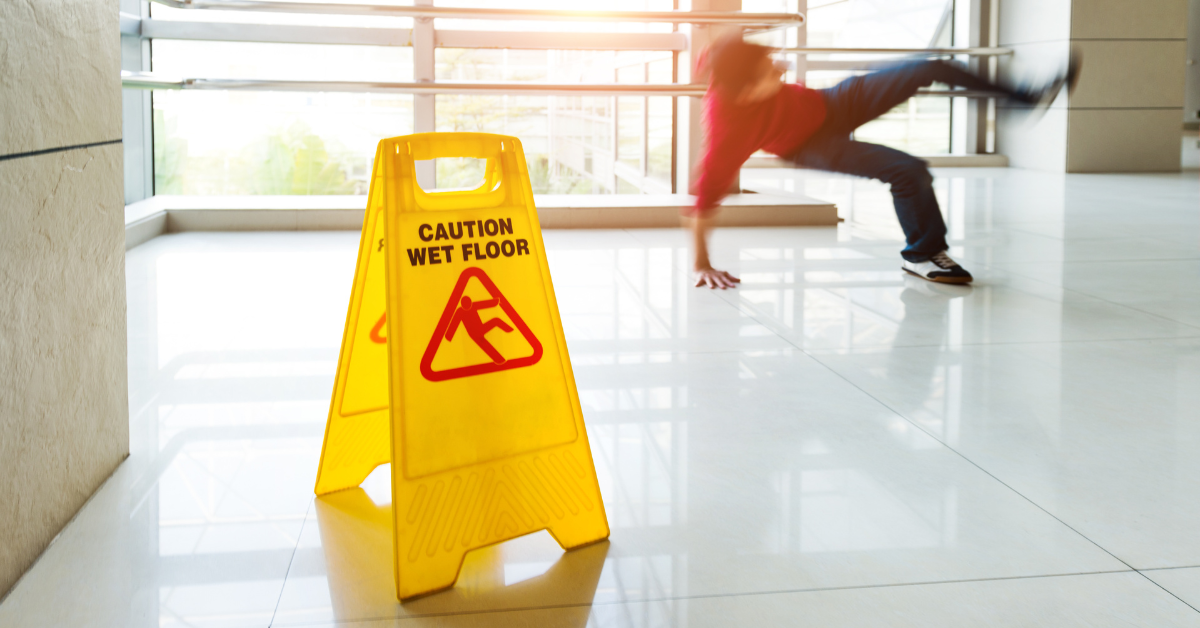Slip and Fall Accident: Common Causes and Next Steps
Slip and fall accidents are among the leading causes of injuries, often resulting in severe physical harm and financial strain. While they can occur anywhere, understanding the common causes behind these accidents is crucial for prevention. If you suffered from a slip and fall accident that was due to someone else’s negligence, you may be entitled to compensation. Contact an experienced personal injury attorney to discuss your case.

Wet and Slippery Surfaces
One of the primary culprits behind slip and fall accidents is wet or slippery surfaces. Whether it’s a freshly mopped floor, spilled liquids, or icy pathways, these hazards significantly increase the risk of losing balance and falling. Areas prone to wetness, such as kitchens, bathrooms, and outdoor walkways during rainy or snowy weather, demand extra caution.
Uneven Flooring
Uneven flooring, including cracked sidewalks, loose tiles, or damaged carpets, poses a significant threat to pedestrians. These irregular surfaces create tripping hazards, especially when individuals fail to notice them. Property owners and managers must promptly repair or replace damaged flooring to mitigate the risk of accidents.
Poor Lighting Conditions
Inadequate lighting compromises visibility, making it difficult for individuals to detect potential hazards in their path. Dimly lit stairwells, corridors, and parking lots increase the likelihood of missteps and falls, particularly in older adults. Proper illumination is essential for enhancing safety and reducing the risk of accidents, especially in areas with heavy foot traffic.
Cluttered Walkways
Cluttered walkways obstruct clear pathways, increasing the chances of tripping and falling. Items such as boxes, cables, or debris scattered across floors pose serious hazards, especially in busy environments like warehouses, retail stores, or construction sites. Implementing regular maintenance and organizing cluttered areas can prevent accidents and promote a safer environment.
Lack of Handrails or Guardrails
Staircases, ramps, and elevated platforms without handrails or guardrails present significant dangers, particularly for individuals with mobility issues or balance impairments. These safety features provide essential support and stability, reducing the risk of falls and offering a sense of security. Property owners should ensure the installation and maintenance of sturdy handrails in relevant areas to enhance safety.
Slip and Fall Cases in the Workplace
The greatest concern for slip and falls are in the workplace. For this reason, the Occupational Safety and Health Administration (OSHA) requires Massachusetts employers to follow set regulations to protect against such cases. These regulations include installing guard rails, using safety nets, using travel restraint systems, and maintaining proper equipment that could lead to a greater risk of a slip or fall, such as ladders and scaffolds. Preventative measures protect employees at work against serious risk of injuries that could lead to hospitalization or inability to continue working.
If you have been injured in the workplace, you may be eligible for compensation under Massachusetts law. Consult with a personal injury attorney to help you seek compensation if you are denied workman’s compensation for your workplace-sustained injuries.
What Injuries Could Occur from a Slip and Fall Accident?
A slip and fall could cause serious harm and bodily injuries to the victim. The most common injuries that occur from a slip and fall accident are:
- Broken bones
- Head trauma
- Soft tissue injuries
- Knee injuries
- Ankle or wrist injuries (such as a sprain)
- Dislocated shoulders
- Cuts and bruises
- Spine injuries
- Nerve damage
According to the Massachusetts Department of Public Health, 7% of fatal injuries in Massachusetts in 2020 were due to falls, slips, or trips. The greatest concern for slip and falls are in the workplace. For this reason, the Occupational Safety and Health Administration (OSHA) requires Massachusetts employers to follow set standards.
Disclaimer
The information contained in this blog is for general information purposes only. Bonville & Howard assumes no responsibility for errors or omissions in the contents of the blog.
In no event shall Bonville & Howard be liable for any special, direct, indirect, consequential, or incidental damages or any damages whatsoever, whether in an action of contract, negligence, or other tort, arising out of or in connection with the use of this blog or the contents of this blog. Bonville & Howard reserves the right to make additions, deletions, or modifications to the contents of this blog at any time without prior notice.
